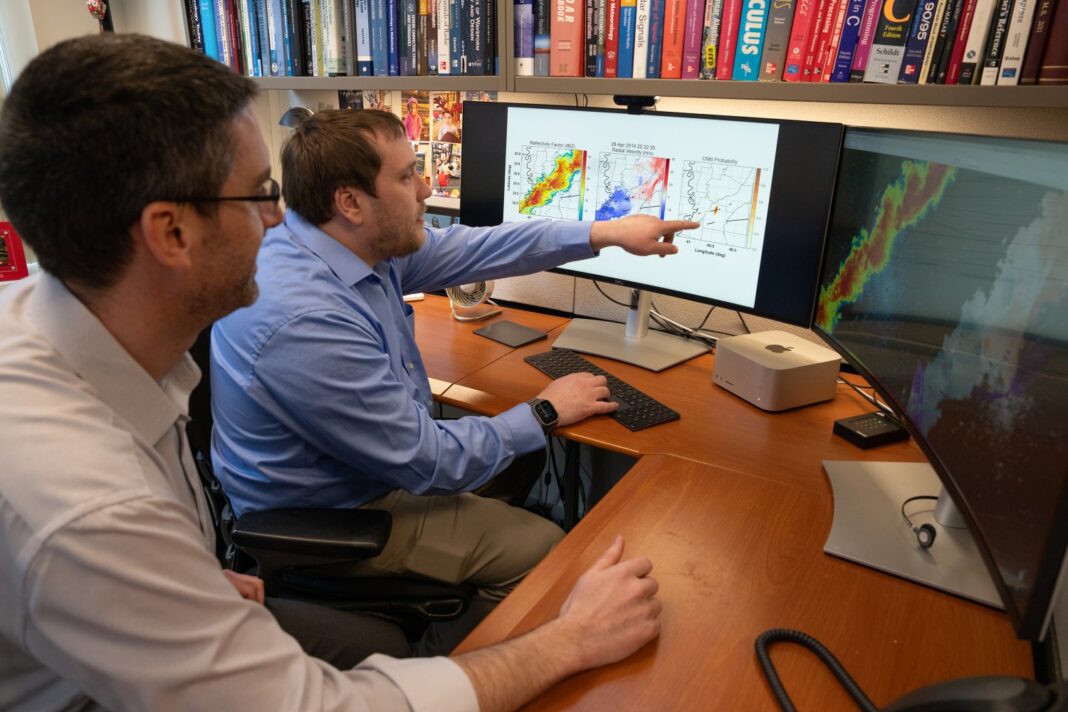In Short:
A new dataset called TorNet, containing radar images of tornadoes and severe storms in the United States over the past 10 years, has been released open source by MIT Lincoln Laboratory researchers. The dataset aims to improve the detection and prediction of tornadoes using machine learning. Deep learning models developed with the dataset show promise in spotting tornadoes, potentially leading to more accurate warnings that could save lives.
Advancing Tornado Detection with Open Source Dataset
The arrival of spring in the Northern Hemisphere signals the start of tornado season, a time when tornadoes create a swirling funnel of dust and debris that poses a significant challenge for meteorologists using radar technology. Detecting the formation of tornadoes accurately has been a longstanding issue due to the complex nature of these natural disasters.
Introducing TorNet Dataset
A new breakthrough in tornado detection comes in the form of a comprehensive dataset called TorNet, which contains radar returns from thousands of tornadoes across the United States over the past decade. Developed by researchers from MIT Lincoln Laboratory, the open-source TorNet dataset aims to pave the way for advancements in using machine learning algorithms for tornado detection and prediction.
Key Figures: Mark Veillette and James Kurdzo, co-principal investigators from the Air Traffic Control Systems Group, spearheaded the development of the TorNet dataset.
The release of the TorNet dataset includes pre-trained models that showcase the potential of machine learning in identifying tornadoes accurately. By leveraging this innovative approach, forecasters could enhance their ability to issue timely warnings, ultimately saving lives during tornado outbreaks.
Enhancing Tornado Forecasting
Despite the significant economic damage and loss of life caused by tornadoes in the United States each year, forecasting these destructive storms remains a formidable challenge. The complexity of tornado formation, often stemming from seemingly identical storm conditions, contributes to the uncertainty in issuing accurate warnings.
Weather radar serves as the primary tool for monitoring conditions conducive to tornado formation. However, the low altitude at which tornadoes occur poses a challenge for radar detection, leading to high false alarm rates in tornado warnings.
Through the integration of machine learning algorithms and the TorNet dataset, researchers aim to revolutionize tornado detection by providing a standardized benchmark dataset for the scientific community. The dataset comprises a vast collection of radar images, including tornadoes and non-tornadic severe storms, to facilitate comprehensive research on tornado detection methods.
Unlocking AI Capabilities for Tornado Detection
Utilizing deep learning models trained on the TorNet dataset, researchers have demonstrated promising results in identifying tornadoes with high accuracy levels. By leveraging the capabilities of deep learning algorithms, the potential for enhancing tornado detection and forecasting in real-time scenarios is significantly heightened.
The development and release of the pre-trained models as open-source resources aim to foster collaboration and innovation within the meteorological community. With the goal of improving tornado detection algorithms worldwide, researchers anticipate further advancements in tornado forecasting and warning systems.
Future Outlook
Looking ahead, the team envisions a future where operational algorithms powered by machine learning technologies could provide valuable insights into the science behind tornado formation. With a focus on explainable AI methods, researchers aim to unravel the intricate processes that precede tornado occurrences, ultimately aiding forecasters in issuing timely and accurate warnings.
As radar technology continues to evolve, the integration of machine learning algorithms in real-time tornado monitoring holds immense potential for enhancing public safety. By streamlining the detection and prediction of tornadoes, researchers strive to minimize false alarms and improve the overall effectiveness of tornado warning systems.
This groundbreaking initiative, supported by Lincoln Laboratory’s Climate Change Initiative, underscores the commitment to leveraging cutting-edge technologies for addressing complex environmental challenges and enhancing global security.





